Soft Pastels or Oil Pastels: Which Ones to Choose?
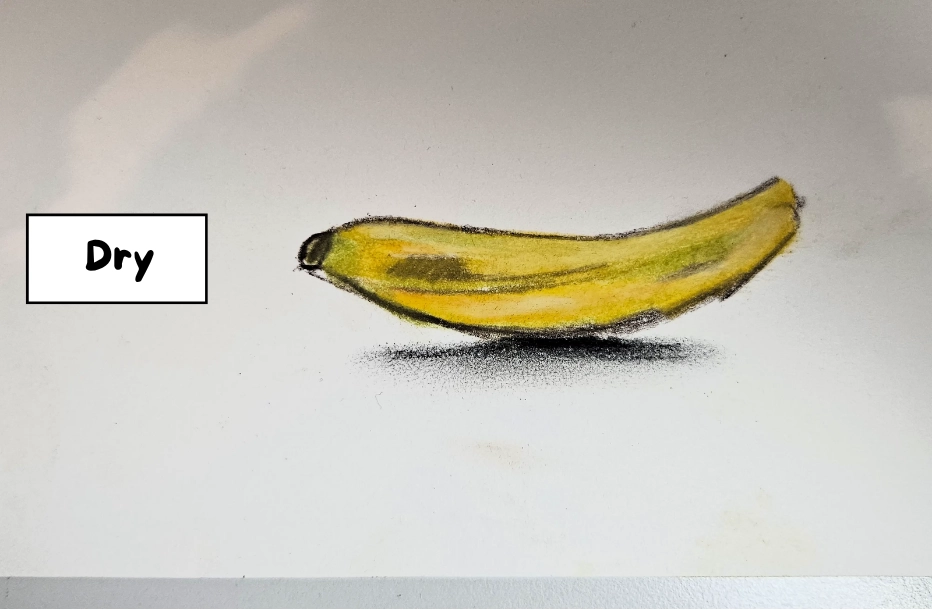
Today, I'm going to clearly differentiate between dry pastel and oil pastel. I'll explain how to choose the right type of pastel depending on what you want to draw. We'll also look at the different characteristics, as well as the advantages and disadvantages of each type of pastel.
THE TWO CATEGORIES OF PASTELS
Pastels come in two categories: dry pastels and oil pastels. We will quickly review the different types of pastels and then we'll discuss the main differences to help you choose which type of pastels to use for drawing.
OIL PASTELS
Oil pastels have a very creamy texture and vibrant colors, somewhat like oil paint. Wax pastels, on the other hand, are drier to the touch and much more affordable. They are also often used with other artistic techniques.
In this article, I will discuss the two types of oil pastels. For simplicity, when I just say "oil pastels", I am referring to oil pastels, which are the most common. And if I use wax pastels, I will specify that. In the image, we can clearly see that the oil pastel is creamier than the wax one.
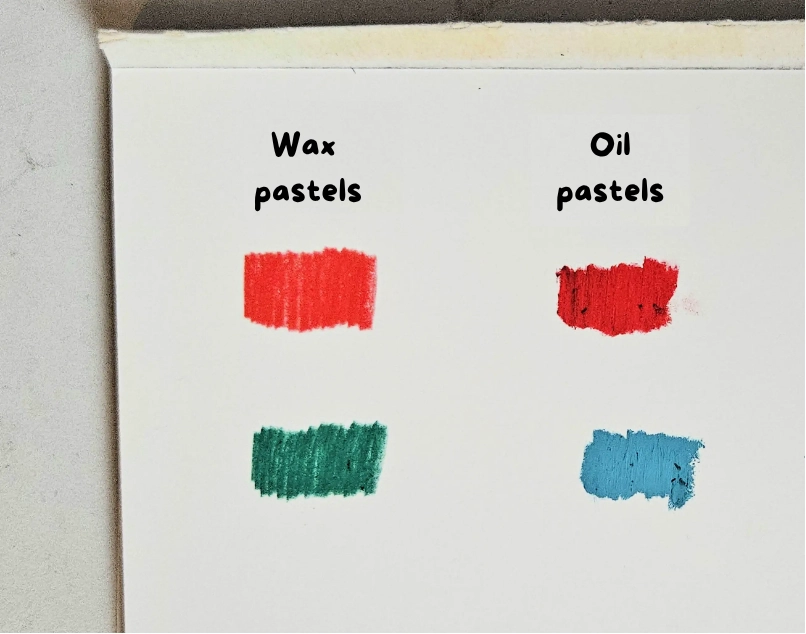
DRY PASTELS, INCLUDING SOFT PASTELS
Dry pastels come in different forms: hard or soft, like PanPastels pots, in pencils, or in sticks. Each type has its advantages and disadvantages, but in this article, I will focus primarily on pastel pencils and sticks, as PanPastels are less commonly used.
Made of pure pigments, dry pastels have a very powdery texture and provide vibrant colors with a high pigment concentration. This allows them to be easily blended and layered, provided that suitable paper is used. Unlike oil pastels, they release a large amount of pigment upon application. This can be seen in the image alongside.
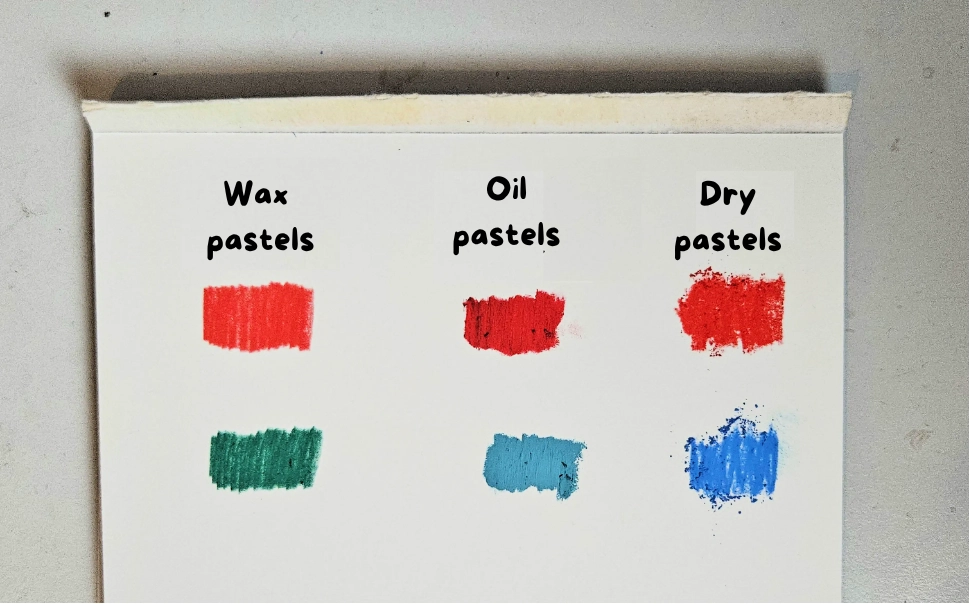
HOW TO CHOOSE THE TYPE OF PASTEL TO USE
Now that we've looked at the different types of pastels and their characteristics, we can compare dry pastels and oil pastels, and see in which cases one should use one or the other.
RENDERING, TEXTURES & TECHNIQUES
Dry pastels and oil pastels provide very different textures, directly influencing the final outcome of your drawing. Coloring techniques also vary, and you may prefer one technique over another.
Dry pastels have a powdery texture and a high concentration of pigments, which facilitates the layering of colors and allows for very even blending. Their softness makes it easy to mix shades with a finger, a cloth or a blending stump. However, to fix the pigments and prevent them from shifting after the drawing is completed, the application of a fixative is recommended.
Conversely, oil pastels are intense, creamy and resemble paint. The texture is very smooth, allowing for vibrant colors to be achieved. However, they sometimes do not blend very well, and the layers cannot be infinitely superimposed as they saturate quickly.
In the picture below, we can see that the layering on the oil pastel makes it "dirty" and uneven, which can also make color creation difficult.
Dry pastel, depending on the type of paper used, can very easily layer, create new colors and have a uniform finish.
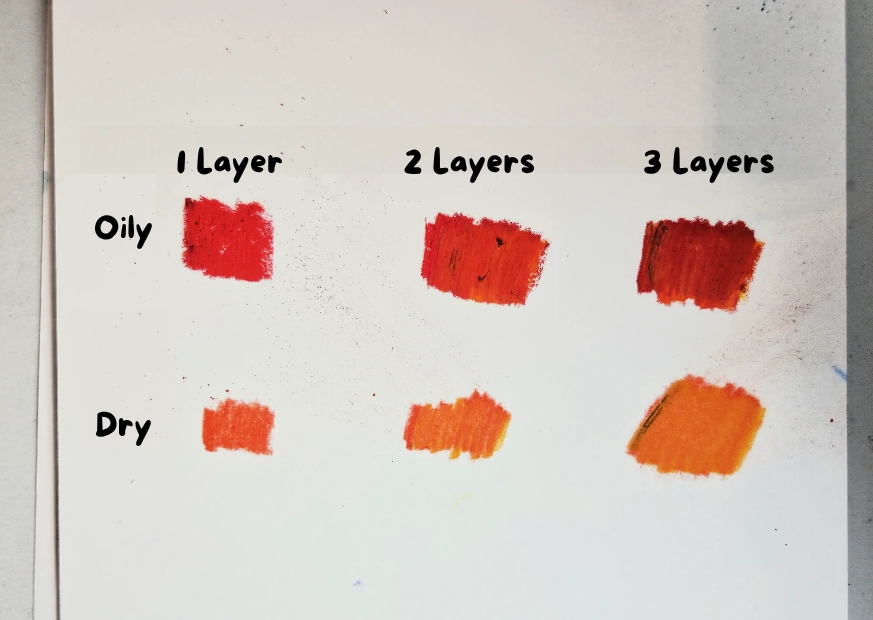
It can also be seen in this image. The layering is better applied on the dry pastels side.

This makes gradients much more complicated to achieve with oil pastels.
We cannot, as with other mediums, casually mix colors by gradually adding the light color to the dark color. We must juxtapose the colors, without overlapping them, and blend the section in-between. And even with this process, the result is not exceptional, unless you really apply yourself. On the other hand, dry pastel can be layered very easily in just a few seconds without any issues.
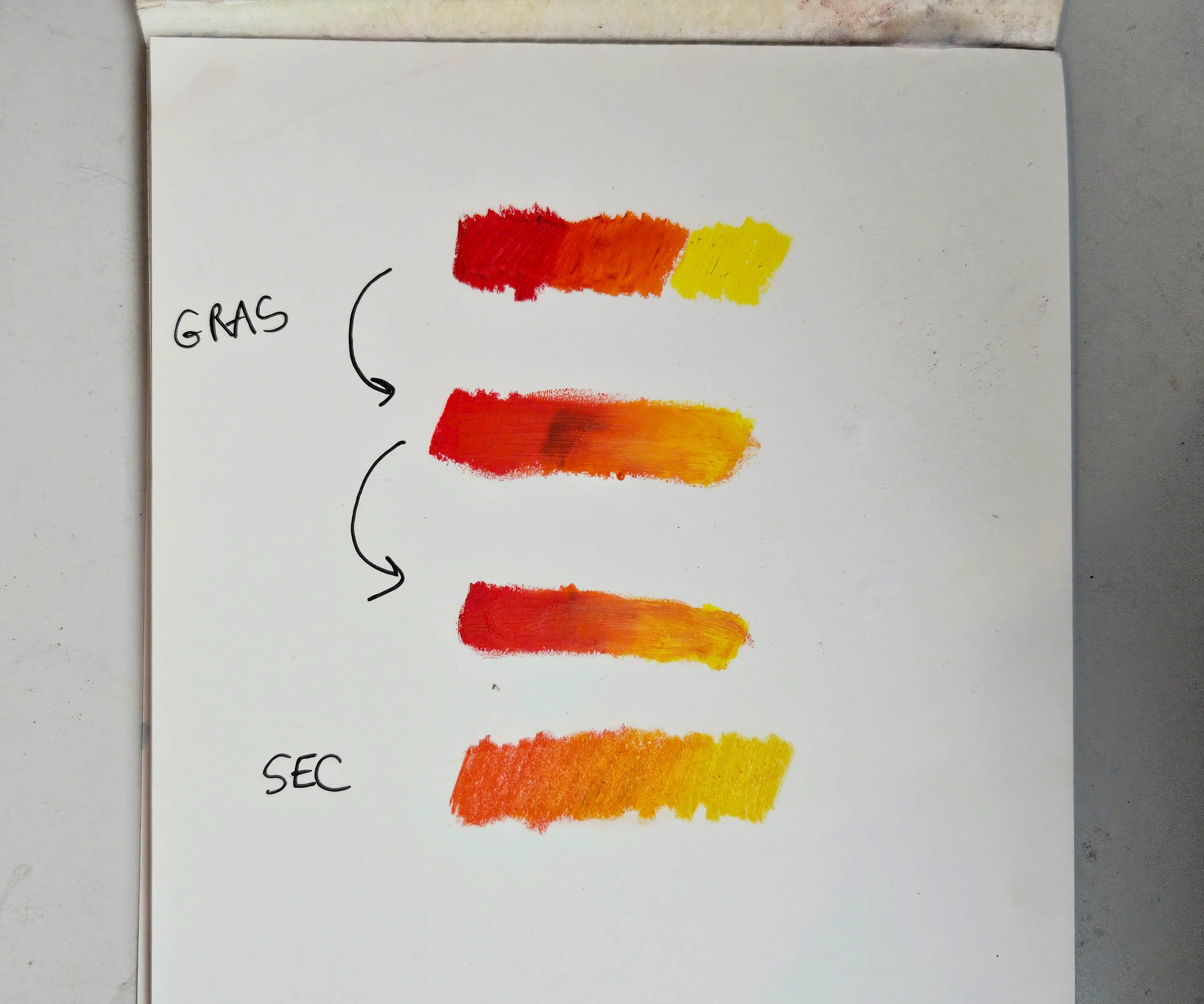
You can, however, use solvents like turpentine if you want to achieve effects similar to oil painting and more easily blend colors together. I rarely use this because I find that this method dulls the drawing a bit, and I prefer the colors in their natural state.
Unlike dry pastels, they don't necessarily need to be fixed, although I still fix them.
EASE OF USE
If you use dry pastel, you will need to find the type of paper suitable for dry pastels. Indeed, dry pastels require a textured paper to enable the pigment to properly adhere and to prevent it from sliding off the sheet. They also require a certain level of control, as their powdery texture can be very volatile and messy.
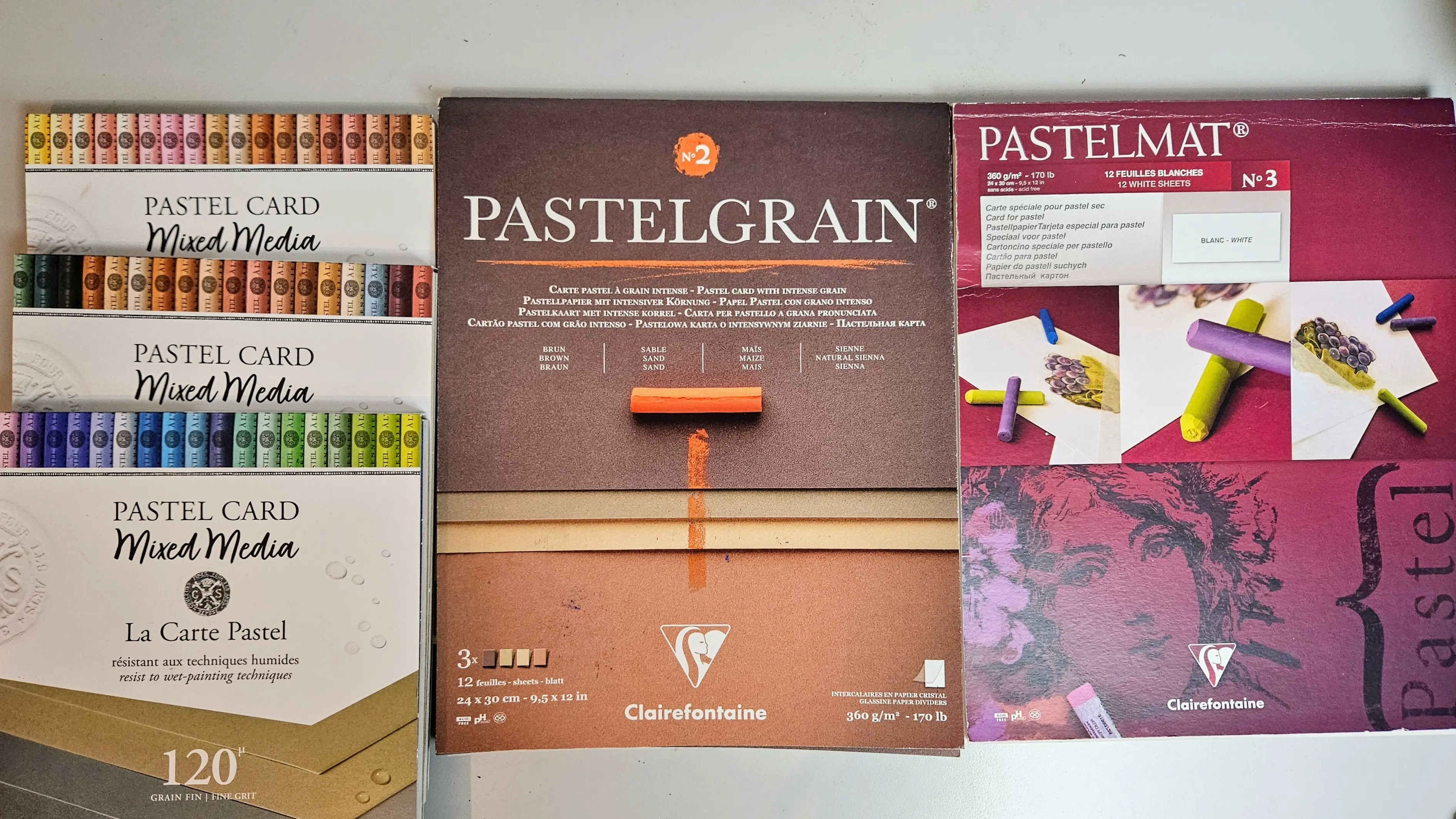
On the other hand, oil pastels adhere to a wide variety of surfaces: paper, canvas, wood, ceramic, glass. This makes them very easy to use for beginners, as you don’t have to worry about which surface to use. Dry pastel can also adhere slightly to wood, but it will hold much less well and for a shorter time.
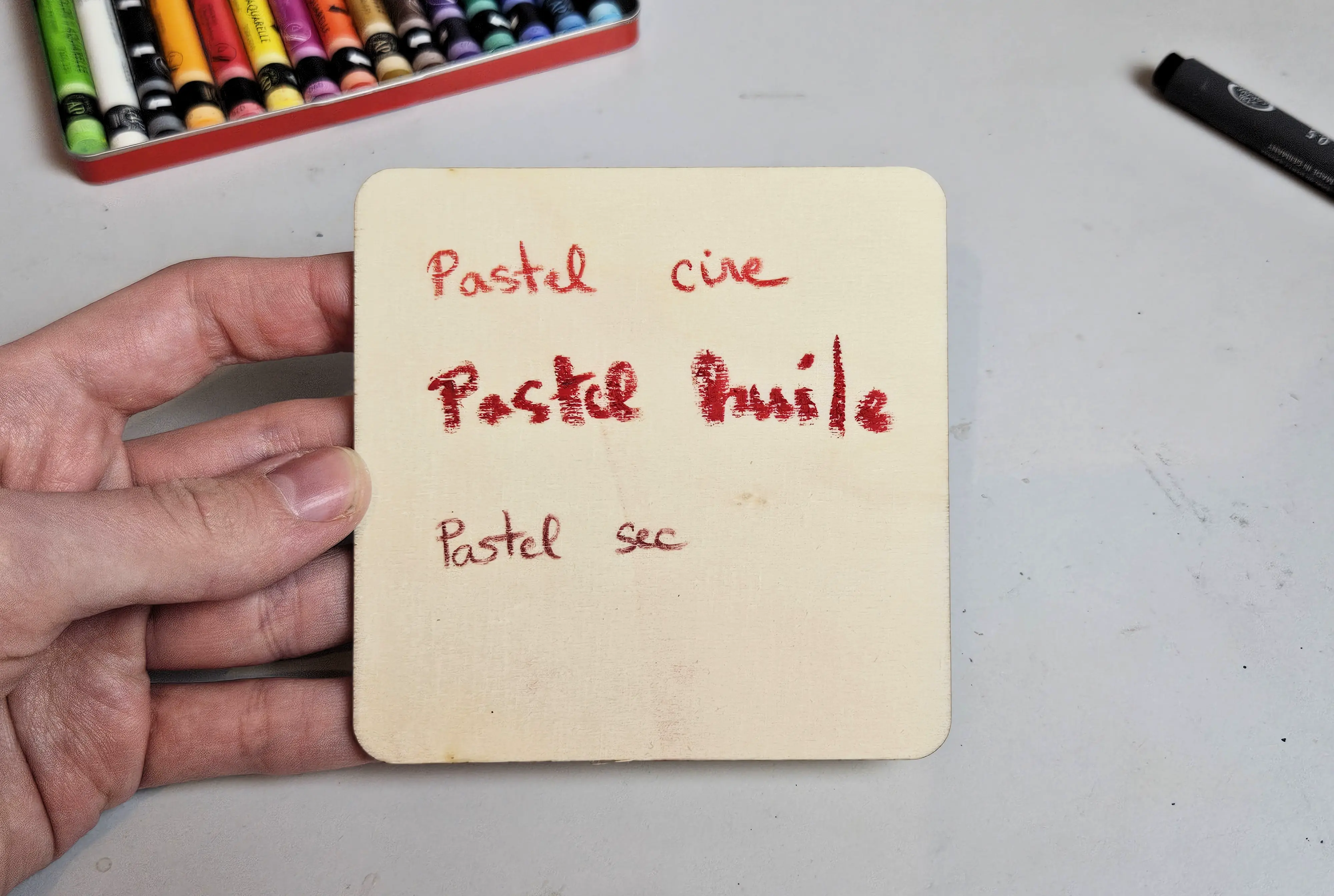
LEVEL OF DETAIL
Dry pastels come in several formats. The sticks are perfect for creating flat colors, gradients, and smooth transitions, while pastel pencils allow for precise and detailed work.
Conversely, oil pastels offer less precision. Although they are available in pencil format, these tend to be less creamy and often of lower quality than the sticks. Their rich and creamy texture tends to smear, making details difficult or even impossible to achieve on small formats. Therefore, they are more suited for large compositions than for meticulous tracing.
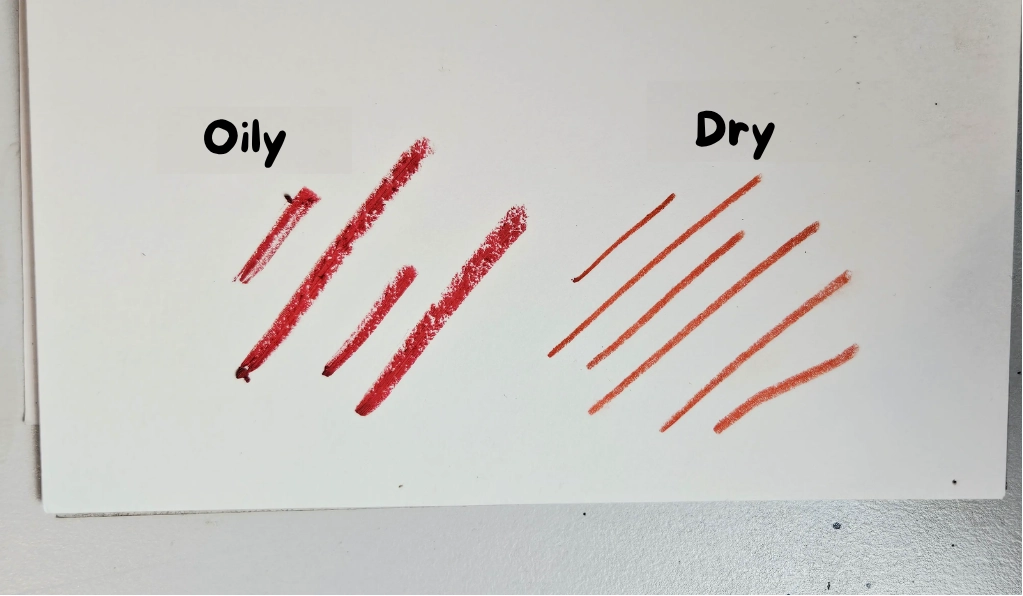
WHO IS EACH TYPE OF PASTEL BEST SUITED FOR?
Dry pastels are highly regarded by both amateur and professional artists for their excellent rendering. However, being very powdery, they are much less suitable for young children, especially because of the pigments and pastel dust.
Oil pastels, on the other hand, are suitable for all audiences. Children will be able to more easily use wax pastels, which are more durable, easier to handle, and less messy than oil pastels.
COLOR RANGE
Dry pastels offer an extremely wide range of colors, with hundreds of shades available depending on the brand. This allows you to better choose your colors and select all the nuances necessary for mixes.
Conversely, oil pastels offer less color, and the available palette varies by brand. However, it is still possible to create many shades directly on the medium, but this is generally less popular and more complicated, due to the layering of coats.
BUDGET
In general, dry pastels are more expensive than oil pastels, especially high-quality extra-fine pastels. A stick of dry pastel can sometimes cost between 3 and 6 euros each depending on the brand.
Dry pastel sets (from 50 to 100 colors) can exceed 200 or 300 euros…
However, there are more affordable dry pastels, which are good value for money if you don't have much of a budget.
Oil pastels are generally less expensive than dry pastels. A stick of oil pastel can cost between 2 and 4 euros. Boxes of 50 colors range between 100 and 150 euros. Some brands are also very affordable, offering oil pastel sets at around 20 euros. Having tested a high-end brand (Sennelier), and a more affordable brand (Faber-Castell), I find that the pastels are less creamy, and have a slightly less paint-like effect, but they are still very good for starting with oil pastels.
COMPARATIVE CHART OF DRY PASTEL VS OIL PASTEL
To help you, here is a small comparative summary table of the previous paragraphs, which should enable you to choose between dry pastel and oil pastel based on your drawing criteria.
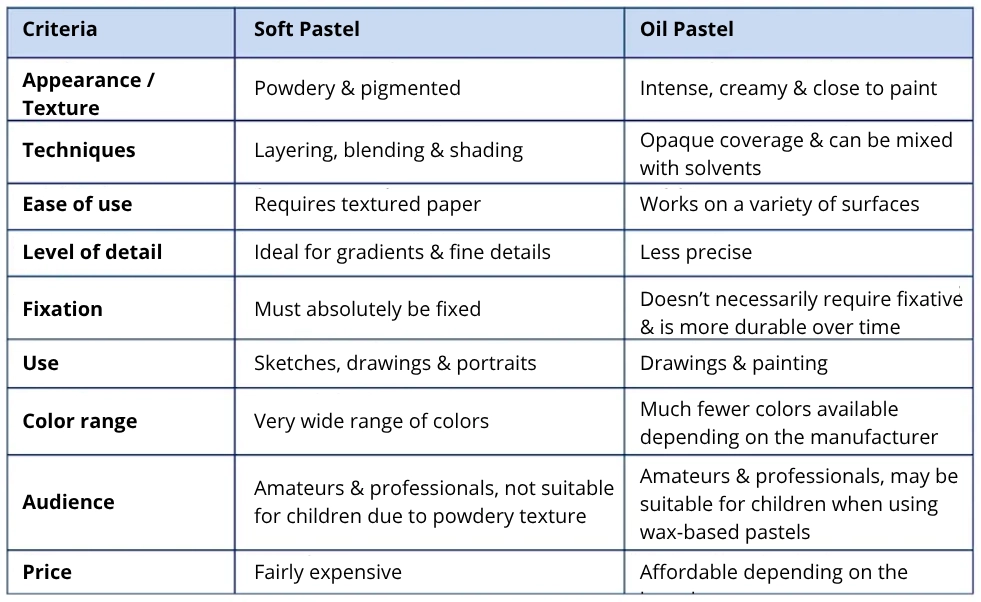
Depending on the pastels you choose, you can also select certain tools to use to work your pastels (brush, paper stump, cloth, water, etc.) to achieve the effect of painting, drawing, watercolor, etc.
THE DIFFERENCES BETWEEN TYPES OF PASTELS ILLUSTRATED BY A DRAWING
To conclude this article, we will now create a banana in just a few minutes using the 3 types of pastels mentioned in this article: wax pastel (oil pastel), oil pastel (oil pastel), and dry pastel.
We start with a quick sketch using a brown pastel for each type. We notice right from the start that the oil pastel struggles to be precise in these sketch lines.
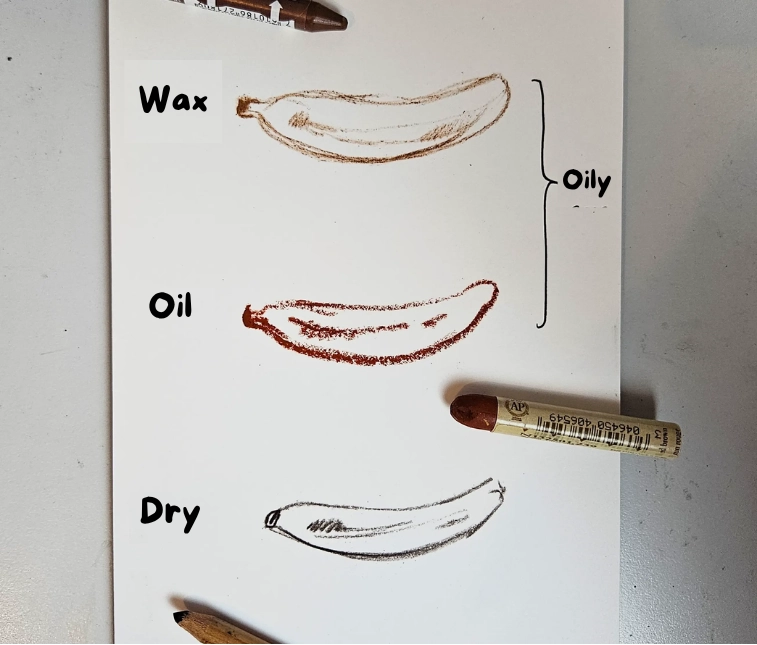
We're adding a bit of green.
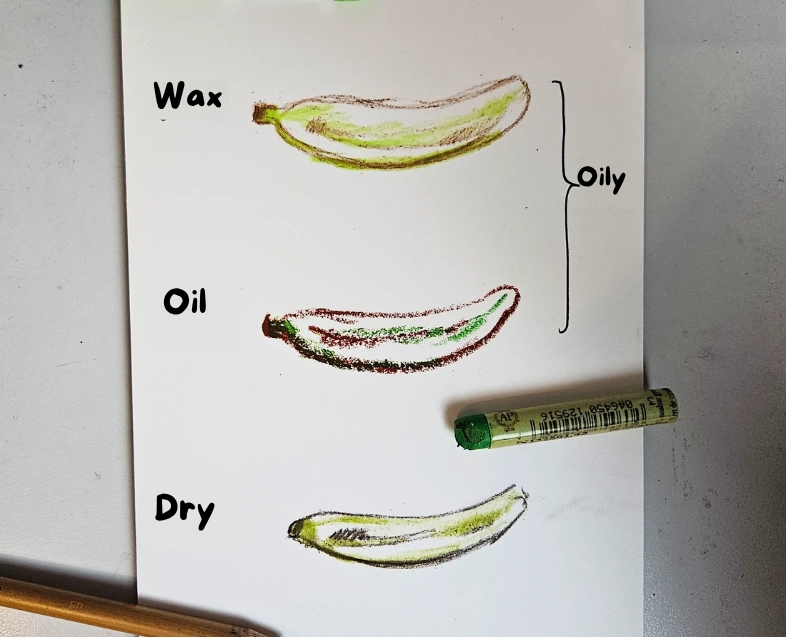
Next, I add yellow, as well as white and orange for the wax pastel and dry pastel. Oil pastel, on the other hand, is less tolerant of layering, making the addition of multiple colors more complex on a small format. I then blend with my finger or a stump.
Even with a more limited palette, oil pastel offers a result close to painting, which is very satisfying. With just three colors, you already get a really nice result!
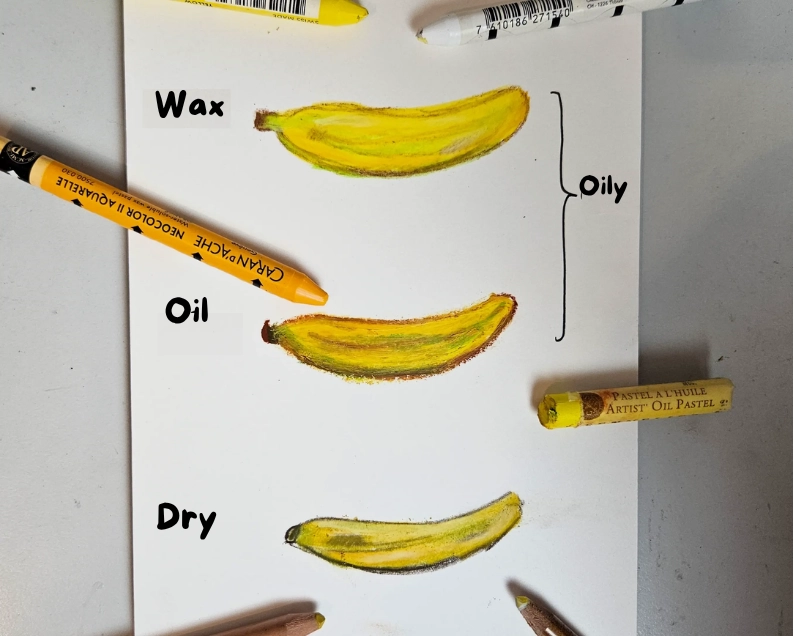
In my opinion, wax pastel is a perfect balance between oil pastel and dry pastel. It offers vibrant colors, doesn't dirty your hands, and allows for layering quite easily, all while remaining pleasant to work with.
We finally add the little shadow at the bottom with a black pastel.
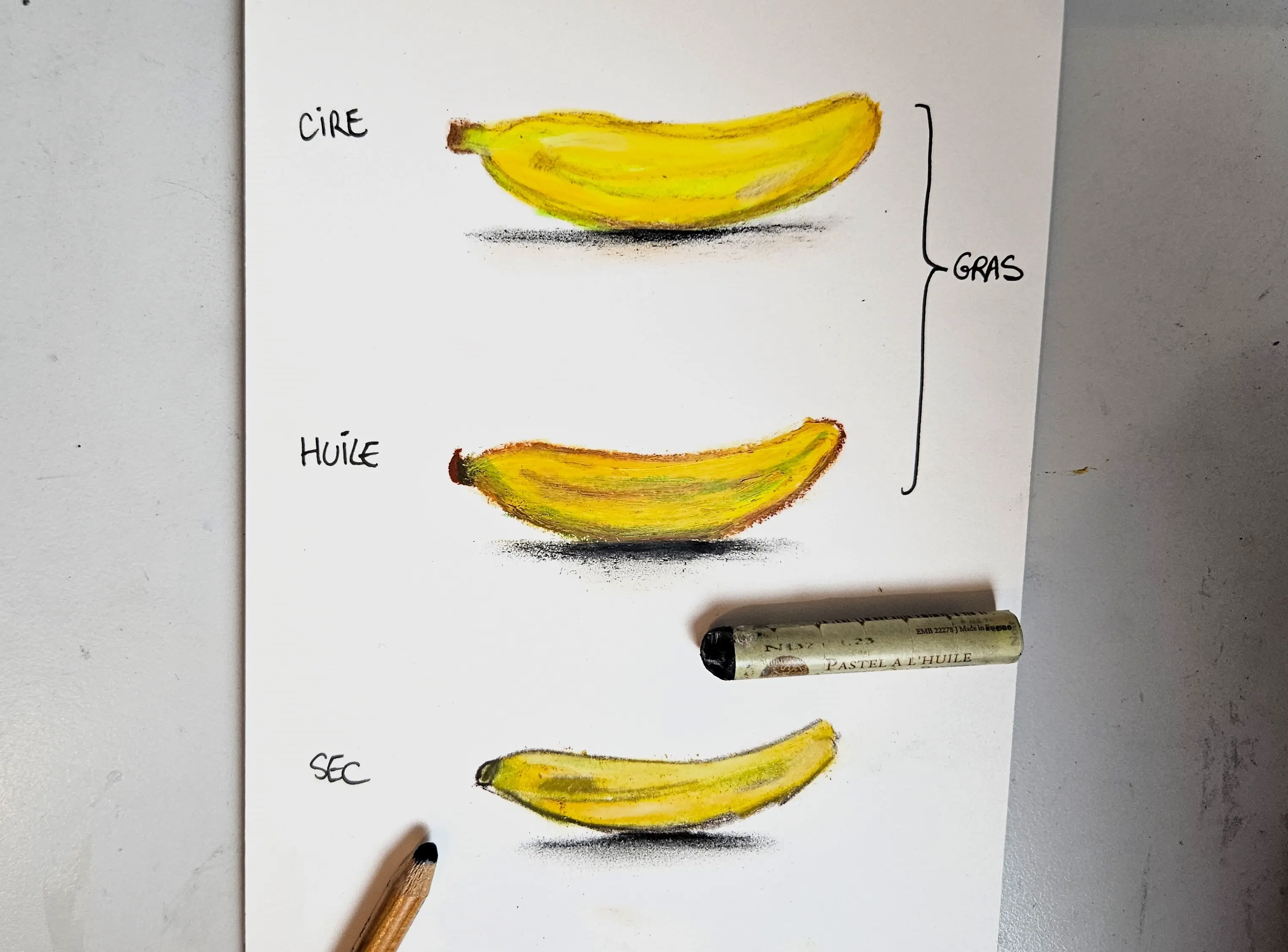
Thus, we obtain this result for both types of oil pastels.
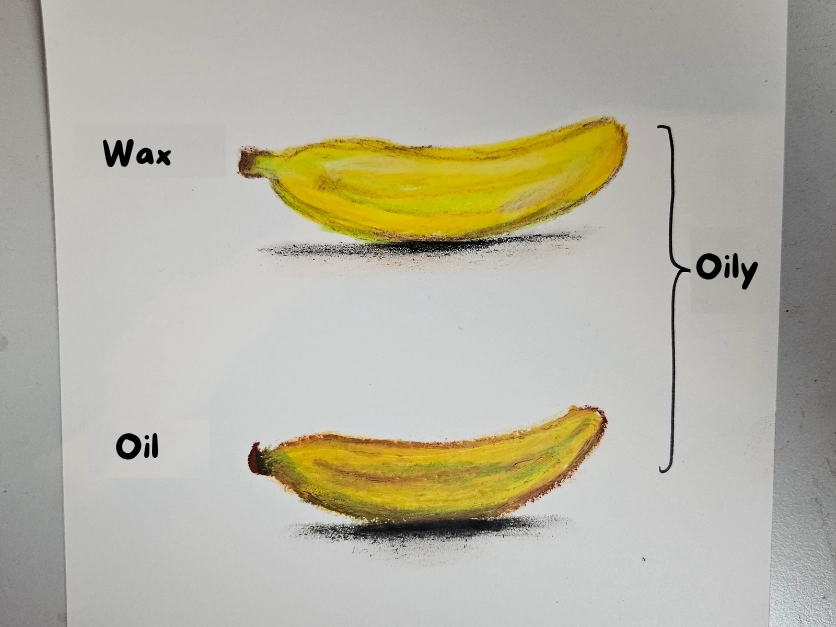
We can see that dry pastel blends shadows the best, providing the most natural effect. Indeed, the pigment spreads well on the paper and allows for a more realistic result.

This article is now complete, I hope that the different characteristics mentioned in this blog will help you better choose the type of pastels you should use based on your criteria (taste, budget, usage, etc)! Don't hesitate to try some of every possible type, and you will form your own opinion!
Writer and illustrator: Elodraw

